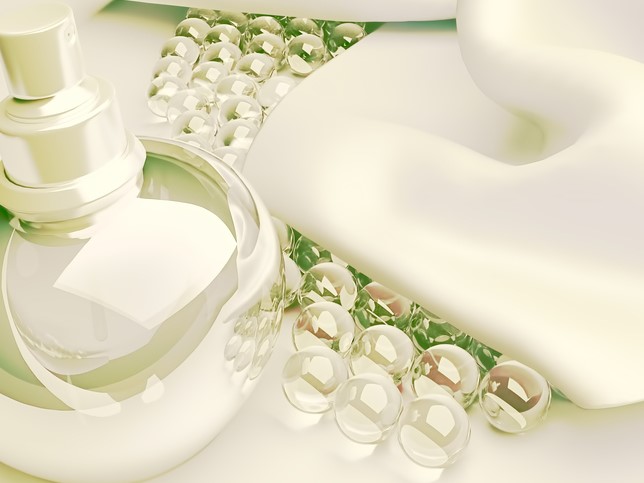Air Fresheners: Are They Safe?

The Bottom Line
The toxic effects of air fresheners differ depending on the formulation. Inhaling small amounts of most air fresheners is usually not dangerous. Swallowing the gel-type evaporative beads or reed diffuser solutions can cause serious effects. There are also concerns about the adverse effects of repeated air freshener use on the environment and the body’s health.

What is in air fresheners?
Most air fresheners contain a variety of fragrances and essential oils. Fragrances are chemical compounds that have pleasant odors. Essential oils are naturally occurring oils, typically obtained from plants. These oils contain the “essence” of the plant’s fragrance, hence the term "essential." Examples of essential oils include cinnamon oil, pine oil, and lavender oil.
Air fresheners have been used to mask unpleasant odors for decades. An early type developed for home use were aerosols. These products are sprayed into the air and create a fine, lingering mist of fragrance. When the use of aerosols became unpopular due to health and environmental concerns, manufacturers responded by reformulating air fresheners as scented oils, reed diffusers, solids, and gels. High-tech versions are heat-activated or automatically spray throughout the day.
Liquid air fresheners, such as plug-in refill bottles and reed diffusers, typically contain fragrances and essential oils dissolved in a solvent like isopropyl alcohol (rubbing alcohol). The evaporation of the solvent helps carry the fragrance into the air. Solid air fresheners, such as cone-type products, typically contain the fragrance embedded in wax. Gel products, such as evaporating beads, allow slow evaporation that prolongs the presence of the fragrance. Aerosol sprays use compressed gas propellants like butane, propane, or nitrogen.
While many of the spray products are designed to just add fragrance to the air, others help remove odors by using disinfectants, which are chemicals intended to kill bacteria or mold. One such disinfectant is ethanol, which is also found in alcoholic beverages.
Is it bad to breathe in air freshener? Are air fresheners toxic?
Despite their popularity, some evidence suggests that air freshener products increase indoor air pollution and pose a health risk, especially with long-term exposure. Air fresheners release volatile organic compounds (VOCs) into the air. A VOC is a type of chemical that turns into a vapor or gas easily at room temperature. Health problems are thought to occur as a result of the chemicals in the air fresheners and from their secondary pollutants. Secondary pollutants are formed when a product’s chemicals combine with the ozone already in the air.
Unintentional injuries have been reported with these products, including burns when flammable aerosol or automatic spray air fresheners have been ignited by a nearby flame.
According to one study, 73% of Americans use air fresheners or deodorizers weekly and 58% are exposed to these products secondhand. Up to 20% of Americans report that exposure to fragrances interferes with their work, travel, or hygiene.
Are plug-in and automatic-release air fresheners safe?
Plug-in air fresheners come in two primary forms: a concentrated solution of oily fragrance that is gradually warmed and released, and an aerosol spray of freshener that is automatically released on a predetermined schedule. Both types should be installed high enough from the ground that children and pets can’t reach them. The heated oil should be warm, not hot, to the touch, but some sources still consider it a possible fire hazard. A battery-operated automated spray product caused serious burns in a woman who lit a cigarette close to the unit and ignited the sprayed liquid.
Are air freshener beads or reed diffusers safe?
Of all the formulations, the evaporating beads and reed diffuser solutions have the greatest risk of serious toxicity when swallowed by children. The beads are dangerous because they are easy to swallow, can be swallowed in large quantities, and contain enough VOCs to cause serious effects. Symptoms can last a long time because the beads slowly dissolve in the intestine, causing a prolonged release of the toxic chemicals. The diffuser solutions are dangerous to children because they are displayed with open tops. This can allow large amounts of essential oil dissolved in isopropyl alcohol to be swallowed.
What to do if you get air freshener in your mouth.
Briefly inhaling a small amount of a spray air freshener might cause some coughing, choking, or difficulty catching one’s breath. These effects should get better quickly with fresh air.
Swallowing air freshener can cause toxicity ranging from minor irritation of the mouth to life-threatening effects. Swallowing some of a solid, cone-type air freshener is not likely to cause symptoms because it is embedded into wax, which limits the amount that can be swallowed. Swallowing a small amount of wax is a choking hazard in young children but otherwise should not be toxic.
Liquid air freshener, when swallowed in small amounts, can cause minor irritation to the mouth, nausea, and vomiting. Swallowing large amounts can cause drowsiness or intoxication. Swallowing spray air freshener can cause similar effects, but they are not typically swallowed in large amounts because it is difficult to release a large quantity from a spray nozzle at once.
If you suspect someone has swallowed or inhaled an air freshener product, immediately check the webPOISONCONTROL online tool for help or call Poison Control at 1-800-222-1222.
What to do if you get air freshener on your skin or in your eye.
Getting air freshener on the skin can cause some irritation and redness. Typically, the discomfort goes away after washing the area well with soap and water. Fragrances are known to cause allergic-type skin reactions, so a rash is also possible. Small amounts of air freshener in the eye are expected to cause redness and irritation, but these effects should resolve within 1 hour after thorough rinsing with water. A medical evaluation should be obtained if the eyes are not back to normal about 1 hour after irrigation.
If you suspect someone has gotten an air freshener product in the eye or on the skin, immediately check the webPOISONCONTROL online tool for help or call Poison Control at 1-800-222-1222.
Karen D. Dominguez, PharmD
Certified Specialist in Poison Information
Revised William G. Troutman, PharmD
Professor of Pharmacy Emeritus
Poison Control Media Information
Did you find this page helpful? If so, we need your support. Poison Control is in constant competition with misinformation online. Links to www.poison.org or our webPOISONCONTROL triage tool from other websites and blogs help internet searchers quickly find accurate information and Poison Control’s contact information in an emergency. If you use the content from this page, please provide attribution via a link back to this page, www.poison.org, or https://triage.webpoisoncontrol.org/#!/exclusions. By doing so, you could save a life. Thank you!
Poisoned?
Call 1-800-222-1222 or
Prevention Tips
- Keep air fresheners out-of-reach of children. Make sure plug-in products are in electrical outlets that are not at floor level.
- Follow the product directions carefully.
- Avoid open flames near potentially flammable products.
This Really Happened
Case 1. A woman’s home had an air freshener that was designed to automatically spray fragrance into the air. The spray contained flammable chemicals that ignited when the woman lit a cigarette. The woman had burns on her face, ears, and scalp (from Hawkins et al., 2009).
Case 2. A worried grandmother called Poison Control because her 12-month-old and 23-month-old grandsons had gotten into an Airwick® product and swallowed some of the scented oil. Both children were initially gagging. The children had their mouths rinsed out and were fine by the end of the call to Poison Control. The grandmother wanted to know if the children needed to be seen in an emergency room. Based on the small amount that was swallowed, it was determined that the children’s status could be monitored at home. Although toxicity, such as excessive drowsiness, can occur with the ingestion of some scented oils, only minor irritation of the mouth and stomach was expected. Poison Control contacted the grandmother a few hours later to check on the children, and they had not developed any symptoms since the initial gagging.
Case 3. A 2-year-old girl swallowed up to 20 air freshener beads, became very drowsy, and had a low heart rate. These symptoms lasted for days, and the girl needed hospitalization for medical care (from Goertemoeller and Scaglione, 2009).
For More Information
References
Poisoned?
Call 1-800-222-1222 or
Prevention Tips
- Keep air fresheners out-of-reach of children. Make sure plug-in products are in electrical outlets that are not at floor level.
- Follow the product directions carefully.
- Avoid open flames near potentially flammable products.
This Really Happened
Case 1. A woman’s home had an air freshener that was designed to automatically spray fragrance into the air. The spray contained flammable chemicals that ignited when the woman lit a cigarette. The woman had burns on her face, ears, and scalp (from Hawkins et al., 2009).
Case 2. A worried grandmother called Poison Control because her 12-month-old and 23-month-old grandsons had gotten into an Airwick® product and swallowed some of the scented oil. Both children were initially gagging. The children had their mouths rinsed out and were fine by the end of the call to Poison Control. The grandmother wanted to know if the children needed to be seen in an emergency room. Based on the small amount that was swallowed, it was determined that the children’s status could be monitored at home. Although toxicity, such as excessive drowsiness, can occur with the ingestion of some scented oils, only minor irritation of the mouth and stomach was expected. Poison Control contacted the grandmother a few hours later to check on the children, and they had not developed any symptoms since the initial gagging.
Case 3. A 2-year-old girl swallowed up to 20 air freshener beads, became very drowsy, and had a low heart rate. These symptoms lasted for days, and the girl needed hospitalization for medical care (from Goertemoeller and Scaglione, 2009).
